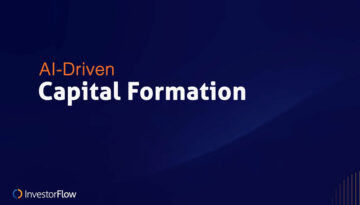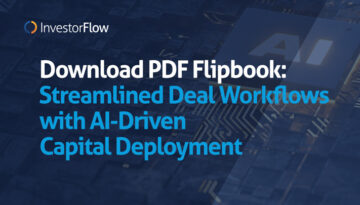On October 9, InvestorFlow hosted clients from more than 40 top-tier firms. Here are the answers to some common questions we're now hearing.
Q: What was the focus of InvestorFlow’s recent Client Council event?
The October 9th Client Council in New York brought together some of the most influential names in private markets to look at one big question: What does it take to make AI actually work inside an enterprise?
Todd Glasson, InvestorFlow’s CEO and Founder, kicked things off by contrasting the hype around AI with the company’s more grounded approach. “AI has nearly mastered information,” he said, “but the next frontier is understanding.”
This year’s theme was clear: AI that works because it works where you work. InvestorFlow's embedded, workflow-based approach is producing tangible, measurable outcomes — not just pilot projects.
Q: What makes InvestorFlow’s approach to AI different?
Most enterprise AI projects fail — in fact, MIT Sloan Management Review estimates 95% never achieve scale. The main reason? They’re built in isolation, detached from how people actually work.
InvestorFlow flipped that model. Its embedded AI lives directly inside Outlook, Salesforce, and the firm’s own front-office applications — fundraising, deal execution, and investor relations — so users don’t have to change behavior.
As Lead Product Manager Julia Dring put it, “We’re not asking users to learn new tools — we’re meeting them where they already work.”
Q: Is there proof this actually drives results?
Yes — and the numbers speak volumes.
At the Client Council, InvestorFlow shared real outcomes from clients actively using its AI productivity suite:
- 10x more data captured automatically in CRM systems, thanks to AI tools like the email add-in.
- 15x increase in key performance indicators tracked, because richer data now flows in automatically.
- 1,000+ pre-meeting summaries generated over a three-month period, helping deal and fundraising teams walk into every meeting prepared.
- Expanded LP targeting, powered by AI that can extract investor preferences from emails, notes, and third-party data.
It’s not “AI for AI’s sake.” It’s AI that quietly makes teams faster, smarter, and more consistent.
Q: What exactly are “embedded” and “interactive” AI in this context?
Embedded AI is what InvestorFlow has already deployed — tools that automate repetitive tasks like contact tagging, data entry, and meeting preparation directly inside existing workflows.
Interactive AI, the next frontier, goes further: it anticipates questions, suggests actions, and collaborates with users in real time. Imagine asking your CRM, “Which LPs are most likely to re-up this quarter?” — and getting an instant, data-backed answer.
The idea isn’t a chatbot tacked onto a system. It’s a conversational intelligence layer that unifies relationship data, workflow triggers, and analytics into one trusted workspace.
Q: Why is AI especially critical for private markets?
Private markets are data-rich but structure-poor. Most of the intelligence firms need sits in emails, call notes, investor updates, and documents — data that traditional CRMs can’t capture.
InvestorFlow’s AI was built for this. It understands the unique language of private equity, private credit, and real assets — from “co-investment allocations” to “tenancy schedules.”
As one panelist put it, “You can’t automate private markets with general-purpose AI. You need something that speaks the language of capital formation.”
Q: What does this mean for users day-to-day?
It means less admin and more insight.
- Emails automatically update CRM records.
- Meeting summaries are generated before anyone steps into a room.
- Follow-ups and next steps are captured without manual effort.
For fundraising professionals, deal teams, and IR alike, the result is a system that finally reflects reality — without extra work. Or, as Glasson put it: “Instead of spending 30 minutes logging interactions, you spend 30 seconds.”
Q: Where is InvestorFlow headed next?
Having proven that embedded AI can scale, the company is now moving into the interactive AI phase. This next generation of capabilities will bring together three forms of intelligence:
- Relationship Intelligence – Mapping and strengthening connections across investors, companies, and funds.
- Workflow Intelligence – Automating and predicting the next step in every process.
- Knowledge Intelligence – Turning unstructured communication into structured, usable insight.
InvestorFlow is also inviting expert partners to collaborate on new features like document extraction, cross-system data connectors, and AI agents that work across asset classes.
Q: What’s the big takeaway from this “sensible AI” philosophy?
It’s simple: AI succeeds when it’s practical, contextual, and invisible.
InvestorFlow’s mission isn’t to replace humans or reinvent how they work — it’s to make the existing workflows more intelligent.
In Glasson’s words, “We’ve moved from proof of concept to proof of scale. Now we’re building the proof of understanding.”
That blend of pragmatism and ambition — AI as a tool, not a spectacle — is what sets InvestorFlow apart.
In short:
InvestorFlow isn’t selling the dream of AI. It’s delivering the reality — one inbox, meeting, and insight at a time.

